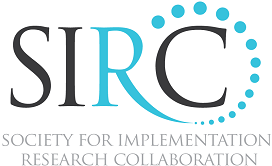Contextual Determinants of Research Evidence Use in Public-Youth Systems of Care
Saturday 10:30 – 11:45 Breakout D4
Presentor: Antonio Garcia
Antonio Garcia, University of Pennsylvania; Lawrence A. Palinkas, University of Southern California; Minseop Kim, University of Pennsylvania; Lonnie Snowden, University of California – Berkeley; John Landsverk, Oregon Social Learning Center
While evidence-based practices (EBPs) exist to promote positive developmental outcomes among at- risk youth, they are not implemented to fidelity (Axford & Morpeth, 2013). One way to address this gap is to understand and promote conditions through which evidence is used (Barwick et al., 2008). This study identified which contextual determinants (poverty, foster care placements, mental health expenditure) predict research evidence use (REU). Public records from 37 counties in California were collected in 2008; and child welfare, juvenile justice, and mental health system leaders’ (n=96) perceptions of their REU while implementing an EBP were measured via the Structured Interview of Evidence Use (SIEU) between 2010 and 2012 (Palinkas et al., 2012). The 45-item SIEU assesses the extent to which system leaders obtain research evidence (input), whether they assess the validity (process), and when they use evidence (output). Regression results showed an inverse relationship between mental health expenditures and REU. Higher educational attainment increased the likelihood of REU. Positive relationships between scores on the “input??? subscale and racial minority concentration and poverty were detected. Findings underscore the need to identify organizational conditions by which mental health expenditures influence REU, and hire providers with graduate degrees to ensure EBPs are implemented.
Mobile Community Mapping to Integrate Evidence-Based Depression Treatment in Primary Care in Brazil: A Pilot Project
Saturday 10:30 – 11:45 Breakout D4
Presentor: Annika Sweetland
Annika Sweetland, Columbia University/New York State Psychiatric Institute; Maria Jose Fernandes, Itaborai Municipality of Health, Brazil; Edilson Francisco dos Santos, Itaborai Municipality of Health, Brazil; Cristiane Duarte, Columbia University/New York State Psychiatric Institute; Afranio Kritski, Federal University of Rio de Janeiro; Noa Krawczyk, Columbia University/New York State Psychiatric Institute ; Caitlin Nelligan, Columbia University/New York State Psychiatric Institute, Milton Wainberg, Columbia University/New York State Psychiatric Institute.
Several evidence-based interventions (EBIs) for depression have been adapted and demonstrated efficacious in diverse low-resource settings, but few of these innovations have been brought to scale within ‘real world’ health systems. In preparation for a dissemination and implementation study to integrate evidence-based depression treatment in primary care using tuberculosis (TB) as a model in Itaboraí, Brazil, this study will use GPS-enabled smartphones to create a map of currently available mental health care services. With the administrative and logistical support from the Itaboraí Municipal TB Program, two research assistants will conduct brief face-to-face interviews in all 49 public health facilities in Itaboraí to record basic characteristics including the type, location (GPS coordinates), size, structure and staffing, with a particular focus on adult mental health services and resources, and the current management of depression in individuals with TB. The interactive web map will be used to plan for the integration of evidence-based MDD treatment within the Itaboraí health system, as well as serve as platform for planning health services for other medical conditions in Itaboraí. Data collection is scheduled to occur from January – April 2015.
The Use of Concept Mapping to Efficiently Identify Determinants of Implementation in the NIH-PEPFAR PMTCT Implementation Science Alliance
Saturday 10:30 – 11:45 Breakout D4
Presentor: Gregory Aarons
Gregory Aarons, UC San Diego; David Sommerfeld, UC San Diego; Rachel Sturke, NIH Fogarty International Center; Lydia Kline, NIH Fogarty International Center; Laura Guay, Elizabeth Glazer Pediatric AIDS Foundation; George Siberry, NIH National Institute of Child Health and Human Development
HIV acquisition for children in sub-Saharan Africa occurs primarily from mother-to-child transmission during pregnancy, childbirth, or breastfeeding. The NICHD in collaboration with the NIH Fogarty International Center and PEPFAR, established the PMTCT Implementation Science Alliance (ISA) that serves as a platform to bring together NIH R01 implementation science grantees along with program implementers and policy-makers. Studies took place in Kenya, Mozambique, Nigeria, Zambia, South Africa, and the Democratic Republic of Congo. ISA members have a multi-dimensional vantage point to identify key implementation factors for PMTCT interventions across countries, communities, and cultures. We utilized Concept Mapping (CM), a mixed qualitative/quantitative method, over a two-week period, to distill implementation issues across projects and stakeholders. ISA members responded to the focus question: “In your experience, what factors have facilitated or hindered implementation of PMTCT interventions???? Over 150 responses from ISA members (N=50) online or in-person were distilled to 88 distinct statements. ISA members (n=28) sorted statements into categories based on similarity and sort matrices were analyzed using multidimensional scaling and hierarchical cluster analysis. Fourteen key factors that influenced the implementation of PMTCT were identified. CM can be efficiently utilized for understanding issues for multiple implementation strategies across stakeholders, cultures, countries, and health systems.
